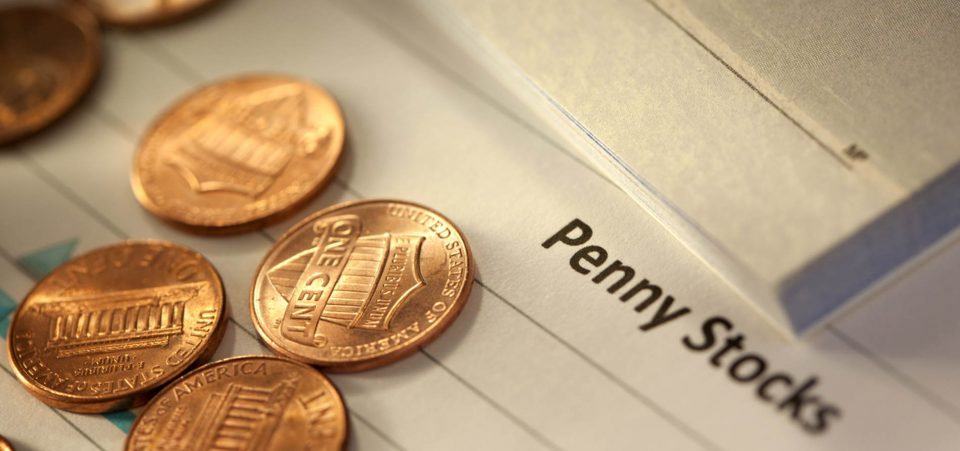Top Penny Stocks for 2017
With the broader markets at record levels, and most analysts agreeing that the stock market is significantly overvalued, where should investors turn to find the stocks with the most upside potential in 2017? Top penny stocks.
Most investors will tell you it’s getting harder and harder to find so-called under-the-radar stocks with tremendous upside potential. They are just looking in the wrong places. Or, they are afraid of rolling up their sleeves and delving into some due diligence.
When it comes to finding 2017’s biggest winners, investors are going to need to consider penny stocks. Granted, the vast majority of penny stocks are garbage. That doesn’t mean you should avoid every penny stock at any cost, no matter what the penny stock naysayers are preaching.
Just like their small-, mid-, and large-cap peers, there are a number of excellent, well-run, profitable penny stocks, trading on major exchanges (Nasdaq, NYSE) with excellent fundamentals, momentum, and great long-term growth potential.
That doesn’t mean all penny stocks should be treated equally. Far from it. Every day, you can read about penny stock scams and investors bilked of their money.
This past January, a Stevenson Ranch, California man was sentenced to 33 months in prison after swindling more than $27.0 million from investors in a sophisticated penny stock scheme. (Source: “Stevenson Ranch man sentenced to 30 months in prison, ordered to pay back $6 million,” Santa Clarita Valley Signal, January 26, 2017.)
A Canadian man was recently sentenced to four years in a U.S. jail for a “pump and dump” penny stock scheme that netted him over $1.0 million. (Source: “Canadian jailed in U.S. over ‘pump and dump’ penny stock fraud,” The Globe and Mail, January 27, 2017.)
Scary, right? Not really. It’s just as scary as any other investment you’d buy without researching. Even then, think about all the seasoned investors who lost money with Nortel and Enron.
When it comes to investing, there are no sure bets; hot penny stocks or otherwise. If you’re going to invest your hard-earned money, you need to do some thorough due diligence. Doing so will help you find excellent penny stocks. Accounting for inflation, we’re defining penny stocks as those companies trading under $10.00. Ignoring a stock with excellent upside potential simply because it’s trading for less than $10.00 and is referred to as a penny stock would be a mistake.
For those willing to do their homework, trading penny stocks can be lucrative. It just requires due diligence, a nose for BS, and a lot of common sense.
To help get you started, I’ve highlighted 7 of my best penny stocks for 2017. This is not a list of “Buy” recommendations. What it is, is a helpful place to begin your research before investing in the best penny stocks.
The Best 7 Penny Stocks to Watch for 2017
| Company | Stock Price | Market Cap |
| Oclaro, Inc. (NASDAQ:OCLR) | $9.52 | $1.5B |
| Arotech Corporation (NASDAQ:ARTX) | $4.10 | $103.3M |
| Northern Oil & Gas, Inc. (NYSEMKT:NOG) | $3.50 | $211.5M |
| Hecla Mining Company (NYSE:HL) | $6.40 | $2.5B |
| Full House Resorts, Inc. (NASDAQ:FLL) | $2.30 | $53.2B |
| Zix Corporation (NASDAQ:ZIXI) | $4.73 | $253.1M |
| Ashford Hospitality Trust, Inc. (NYSE:AHT) | $7.59 | $684.7M |
Source: Google Finance
1. Oclaro, Inc.
Oclaro, Inc. (NASDAQ:OCLR) is a great penny stock that continues to reward investors. I last wrote about Oclaro back in August 2016 when it was trading near $6.30 per share. By the end of January, it had advanced 54% to around $9.70. The company continues to have great momentum and potential in 2017.
Oclaro is a semiconductor company that designs and manufactures lasers and optical components. The company’s solutions are at the heart of the fast optical networks and high-speed interconnects that enable the next wave of streaming video, cloud computing, voice over IP, and other high-speed and bandwidth-intensive applications. (Source: “Investor Relations,” Oclaro, Inc., last accessed January 30, 2017.)
The company has a market cap of $1.61 billion, forward P/E of 13.63, total cash of $229.3 million, and total debt of $5.23 million.
In November, Oclaro announced first-quarter financials that exceeded guidance in all areas. Revenue for the first quarter of fiscal 2017, ended October 1, 2016, increased 54.6% year-over-year and 8.2% sequentially to $135.5 million. (Source: “Oclaro Announces First Quarter Fiscal Year 2017 Financial Results,” Oclaro, Inc., November 1, 2016.)
First-quarter net income was $3.4 million, or $0.02 per diluted share. In the first quarter of 2015, Oclara reported a loss of $3.5 million, or $0.03 per share.
2. Arotech Corporation
Arotech Corporation (NASDAQ:ARTX) is a penny stock that has evolved from making batteries and chargers to a leading provider of defense and security products including multimedia interactive simulators/trainers and portable power solutions for military, law enforcement, municipal, and homeland security markets. (Source: “Overview,” Arotech Corporation, January 30, 2017.)
The company’s weapon simulation technology is built into all U.S. fighter planes; it services 80% of the world aviation market with its water activated survivor locator lights; and since 2003, the company’s “Arotech Power Systems Division“ has been chosen twice as one of the U.S. Army’s “Ten Greatest Inventions.”
In 2016, Arotech’s share price increased approximately 73% from $2.02 at the beginning of January to $3.50 at the end of the year. The momentum has carried into 2017; the company’s share price is up more than 20% year-to-date.
Arotech has a market cap of $106.28 million, Forward P/E of 51.25, $10.32 million in cash, and $18.24 in total debt.
In November, Arotech reported solid third-quarter results with revenue up 4.3% at $24.3 million. Gross profit was $7.9 million, or 32.45% of revenue, compared to $7.0 million, or 30.2% of revenue in the third quarter of 2015. (Source: “Arotech Reports Third Quarter and Year-to-Date 2016 Results,” Arotech Corporation, November 8, 2016.)
3. Northern Oil & Gas, Inc.
In the face of weak oil prices, the share price of Northern Oil & Gas, Inc. (NYSEMKT:NOG) trended considerably lower in 2016; from a high of $5.85 per share in late April to a low of around $1.60 in early November.
But the industry pessimism changed after Donald Trump won the U.S. election. Trump campaigned on an energy platform that would open onshore and offshore leasing on federal lands, open shale energy deposits, and unleash America’s $50.0 trillion in untapped shale, oil and natural gas reserves. (Source: “An America First Energy Plan,” DonaldJTrump.com, January 30, 2017.)
Oil prices received an additional boost in late November when OPEC (by that, I mean cash-strapped Saudi Arabia) announced plans to cut production for the first time in eight years.
Since the U.S. election, Northern Oil & Gas’s share price has increased 105%. And there remains a lot of upside potential for this oil and gas drilling penny stock in 2017.
An independent energy company, Northern Oil & Gas is the leading non-operator franchise in the Bakken and Three Forks plays in the Williston Basin of North Dakota and Montana.
According to the United States Geological Survey, the Bakken Formation and Three Forks Formation in North Dakota, South Dakota and Montana has a mean of 7.4 billion barrels of undiscovered, technically recoverable oil. (Source: “Williston Basin Overview,” Northern Oil & Gas, Inc., January 30, 2017.)
The company’s focus is on the Williston Basin, one of America’s most prolific oil-producing regions and home to the Bakken and Three Forks oil plays. The company has interests in over 2,600 gross Bakken/Three Forks oil wells in the Williston Basin. These wells produced an average of 16,285 barrels of oil per day in 2015. At the end of 2015, the company had proved reserves of 65.3 million barrels of oil equivalent.
4. Hecla Mining Company
As America’s leading low-cost silver producer, the Hecla Mining Company (NYSE:HL) share price was trading near $2.00 per share at the end of 2015. But then came 2016, global stocks tanked and precious metals and silver and gold mining companies soared.
In 2016, Hecla Mining’s share price increased 171%, closing the year at $5.22. In the first month of 2017, the company’s share price advanced an additional 18.6% to around $6.30 per share.
Hecla is the largest primary silver producer in the U.S., and the oldest NYSE-listed precious metals mining company in all of North America. The company currently has four operating mines in North America and a number of exploration properties and pre-development projects. (Source: “About Us,” Hecla Mining Company, January 30, 2017.)
In 2016, the company’s reserves total increased to 175 million ounces of silver and 2.1 million ounces of gold. Hecla Mining has a market cap of $2.49 billion and Operating Cash Flow of $200.59 million. The company also provides a modest annual dividend of 0.16% or $0.01 per share.
In 2015, the company reported record silver (11.6 million ounces) and silver equivalent production (12.03 million ounces). This represents the 10th consecutive year Hecla has reported record silver reserves. (Source: “Hecla Reports 2015 Sales of $444 Million,” Hecla Mining Company, February 23, 2016.)
In 2017, Hecla expects silver production to be 16.25 million ounces with expected gold production of 233,000 ounces.
In the third quarter of 2016, the company reported solid third-quarter earnings, production, and cash flow. Costs also declined significantly. Third-quarter revenue increased 71.45% year-over-year to $179.3 million. Net income was $25.78 million or $0.07 per diluted share. In the third quarter of 2015, Hecla reported a net loss of $9.8 million or $0.03 per share.
Silver equivalent production was up 17% at 10.3 million ounces. Silver production increased 67% to 4.3 million ounces while gold production was up 19% at 52,126 ounces. All-in-sustaining costs declined 51% to $3.68 per ounce from $7.52 an ounce.
5. Full House Resorts, Inc.
If you’re looking for fun outside Sin City, nothing beats a Full House. Full House Resorts, Inc. (NASDAQ:FLL) operates five casino facilities in Mississippi, Indiana, Nevada, and Colorado. (Source: “Company Profile,” Full House Resorts, Inc., May 13, 2016.)
Its property portfolio also includes Stockman’s Casino in Fallon, Nevada; Bronco Billy’s Casino and Hotel in Cripple Creek, Colorado; Rising Star Casino Resort in Rising Sun, Indiana; Silver Slipper Casino and Hotel in Bay St. Louis, Mississippi. It also operates the Grand Lodge Casino at the Hyatt Regency Lake Tahoe Resort, Spa, and Casino in Incline Village, Nevada.
In 2016, Full House’s share price increased 48% from $1.62 to $2.40.
In November, Full House announced that third-quarter revenue increased 21.9% year-over-year to $41.8 million. Net income was $0.1 million, or breakeven per share. In the third quarter of 2016, net income was $2.0 million, or $0.11 per share.
The company reported solid third-quarter results despite a few minor headwinds. In August 2016, severe flooding in Louisiana affected customers from several of the Silver Slipper’s feeder markets, though guest volumes recently began returning to more normal levels.
The Bronco Billy’s property performed solidly in its first full quarter under Full House’s new ownership, and the company expects to see improvement in its results over the coming quarters and years.
In the second half of 2016, Full House concluded a $5.0 million rights offering to help fund $10.0 million of growth projects at existing properties. The company expected to complete improvements at Stockman’s Casino at the end of 2016. It also expects to complete other planned growth projects throughout 2017 and 2018.
6. Zix Corporation
Zix Corporation (NASDAQ:ZIXI) has been a fun penny stock to watch over the last two years, providing investors with a number of great short- and long-term opportunities. And 2017 promises to be another exciting year for Zix Corporation and penny stock investors.
Zix is an industry-leading provider of e-mail encryption, data loss prevention, and transmission services. Its technology enables users to transmit encrypted e-mail and documents to any address in the world. (Source: “Zix Corporate Presentation,” Zix Corporation, last accessed January 30, 2017.)
The company’s 14,500+ customers include: The U.S. Securities and Exchange Commission (SEC), all Federal Financial Institutions Examination Council (FFIEC) regulators, seven divisions of the U.S. Treasury, 24 U.S. state financial regulators, 2,300+ U.S. financial institutions, 1,200+ U.S. hospitals, and more than 30 Blue Cross Blue Shield organizations.
In October, Zix announced that strong renewals helped drive record revenue and backlog. Third-quarter revenue was up nine percent year-over-year to a record $15.3 million. The company’s third-quarter backlog increased 10% to a record $81.6 million. (Source: “ZixCorp Reports Third Quarter and Nine Month 2016 Financial Results,” Zix Corporation, October 25, 2016.)
Net income slipped slightly to $1.8 million, or $0.03 per share from $1.9 million, or $0.03 per share.
Cash and cash equivalents at quarter-end totaled $24.8 million compared to $20.7 million at the end of the quarter ended June 30, 2016.
ZixCorp’s Chief Financial Officer David Rockvam commented, “In the third quarter, we were able to generate double-digit growth in our total orders and were able to maintain our renewal rate of more than 90%. Looking beyond our numbers for the quarter, we have been able to grow revenue by more than 10% during the first nine months of the year. These results and our current pipeline of business give us confidence that we will achieve our financial guidance for 2016 and be well-positioned for continued growth going into 2017.” (Source: Ibid.)
7. Ashford Hospitality Trust, Inc.
Ashford Hospitality Trust, Inc. (NYSE:AHT) is part of the inn crowd. Ashford Hospitality Trust is a self-administered real estate investment trust (REIT) that invests in upper-scale, full-service hotels. (Source: “Overview,” Ashford Hospitality Trust, Inc., last accessed January 30, 2017.)
The company’s portfolio consists of 124 properties with over 26,000 rooms. The majority of the portfolio operates under premium brands owned by Marriott, Hilton, Starwood, Hyatt and Intercontinental. In addition to making direct investments in hotels, the REIT also originates loans secured by hotel properties.
The company has a market cap of $908.85 million and Operating Cash Flow of $253.64 million. As a REIT, Ashford has to legally distribute most of its earnings as dividends. Thanks to the company’s strong free cash flow, it provides an attractive and safe dividend yield of 6.23% or $0.48 per share. (Source: “Dividends,” Ashford Hospitality Trust, Inc., last accessed January 30, 2017.)
On January 27, Ashford Hospitality’s share price hit a new 52-week high, hitting an intra-day high of $8.23. The company’s share price is up 5.7% in the month of January.






